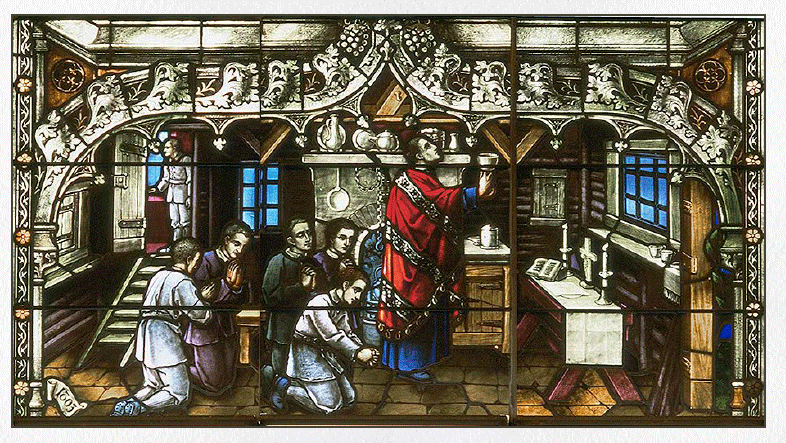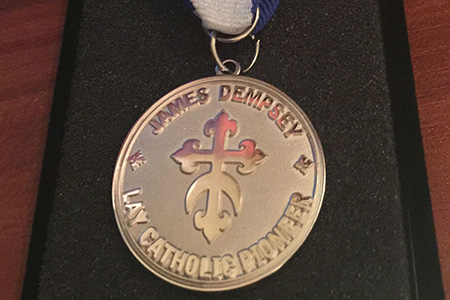A new award from the Archdiocese of Sydney honours Lay Carmelite pioneer James Dempsey. Together with fellow Carmelite Tertiary, John Butler, Dempsey was virtually the centre of Catholic life from 1810-1820 when there were no priests in the fledgling colony.
The medal is awarded to recognise people who have made an outstanding contribution in the context of their local parish. It will be presented for the first time on Sunday 16 July, the Feast of Our Lady of Mount Carmel, in St Mary's Cathedral, Sydney by Archbishop Anthony Fisher, OP.
James Dempsey was transported to Botany Bay for life for his involvement in the Vinegar Hill rebellion of 1798 in Co. Wexford, Ireland.
He was a Lay Carmelite – a Tertiary or Confraternity Member of the Carmelite Order, which was not officially founded in Australia until 1881. He and fellow layman John Butler arrived in Sydney aboard the ship Atlas in October 1802. His wife and four children remained in Ireland. There is no record of his trial but that is not unusual for Rebellion prisoners.
Both men were stonemasons and soon began working on government projects, with Dempsey receiving a free pardon in 1811, while Butler was conditionally pardoned in 1814 and granted a free pardon in 1827.
Three priests were among the Rebellion prisoners, but their ministry was severely restricted and by 1810 they all returned to Ireland.
For the following ten years, apart from a few months in 1817-18, there was no priest in Australia.
James Dempsey then became virtually the centre of Catholic life in the colony. He accompanied the condemned and led prayers as they faced the scaffold. His Kent Street house became a social and religious centre where the Rosary was said on weekdays and Vespers recited on Sundays.
In 1817 Fr Jeremiah O’Flynn arrived in the colony, only to be deported by Governor Macquarie six months later. By accident or design, he left the Blessed Sacrament at Dempsey’s House and the best room was
turned into a chapel with a small confraternity of men watching over the Blessed Sacrament.

Stained Glass window in St Mary's Cathedral commemorating the Mass celebrated by Fr O'Flynn in Dempsey's house
The first official Catholic chaplains arrived in 1820 and planning began soon after for the first St Mary’s Cathedral; a project which saw James Dempsey working as the superintendent of construction and also
serving as one of the chief fundraisers for the building. His son, Cornelius joined him in 1821 and settled in the Shoalhaven area of the South Coast, while James travelled to India to gain all of just ten rupees as a donation from the Bishop of Calcutta to assist the Cathedral appeal. James Dempsey came home and advanced £300 of his own funds to assist the work.
Some of Dempsey’s letters of the time have survived, revealing him as a spiritually strong and humble Catholic man who was seen as having played a leading role in the building of Sydney’s original St Mary’s Cathedral.
James Dempsey died in 1838, and a reproduction of Mass being celebrated at his Kent Street house is reflected in the Cathedral’s stained glass windows. It is located on the western aisle of the nave, closest to the west transept – on the left when facing the altar.















